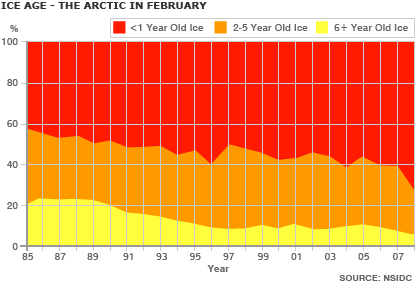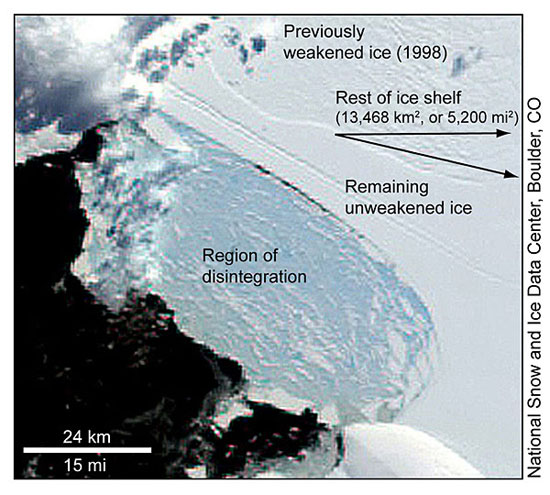This is a continuation on an earlier post called "It keeps getting warmer, no matter what some people say".
Just like the global warming deniers say the Arctic ice is approximately the same as it was last year, as data from Nasa clearly shows. But, the Nasa data also shows that the old and thick Arctic ice is melting much faster than previous years.

Data shows that ice older than two years have decreased from 60% to 30% of the total ice mass in Arctic.
Seelye Martin, manager of the Cryospheric Sciences Program at Nasa headquarters in Washington DC, said that "although this March the area is slightly larger than last March, the area of [thick] perennial ice has reached an all time low." And he concludes that "the volume of Arctic ice continues to decrease."
So despite the colder weather from La Niña the old and thick Arctic ice is melting at record speeds. And this is worrying. The older Arctic ice is thicker and contains less salt than younger ice does. That means they can last longer during warmer periods.
If the Arctic ice melts away it will be felt around the world. We will see sea levels rising and the earth will get warmer when ice no longer can reflect the solar energy back into space.
Walt Meier from the National Snow and Ice Data Center (NSIDC) in Boulder said that "it may look OK on the surface, but it's like looking at a Hollywood movie set - you see the facade of a building and it looks OK, but if you look behind it, there's no building there."
Scientific reports projects that the Arctic will become ice-free by year 2050. But newly released reports suggest it could happen as early as 2013. And as closer we get to 2013 the newer forecast looks more accurate.
It was not even a year ago since the Northwest Passage in the Arctic melted away making it possible for ships to sail all the way through the Northwest Passage. In 2002 Larsen B, a 3,250 km² big area of 220 m thick ice collapsed and melted away. And it was just two days ago reports started coming that the 14,500 km² ice shelf called Wilkinson has started to collapse and melt away.

In 1993 Professor David Vaughan of BAS predicted that if the warming continues the northern parts of Wilkins would be gone within 30 years. In an interview with BBC News recently he said he "didn't expect to see things happen this quickly. The ice shelf is hanging by a thread - we'll know in the next few days or weeks what its fate will be." He also noted that "this is yet another indication of climate change in the Antarctic Peninsula and how it is affecting the environment."
If you are interested the Guardian and SVT (Swedish state television) has videos and images from the melting.
Image credit to BBC and NASA.

Recommended Comments
Join the conversation
You can post now and register later. If you have an account, sign in now to post with your account.